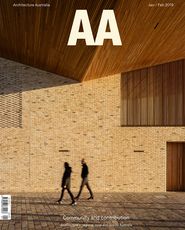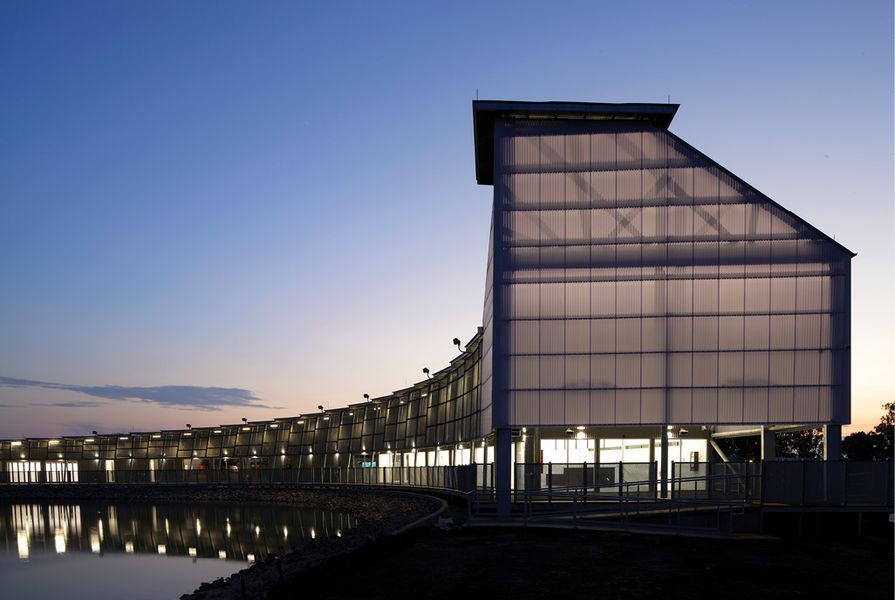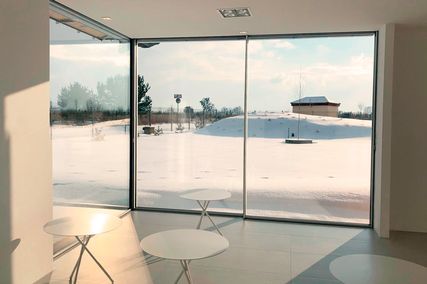Nine hours west of Cairns, on the edge of the Gulf of Carpentaria (GoC), the town of Karumba sits at the mouth of the Norman River. The red, salt-encrusted coastline here is cracked with fissures draining the Cape York wetlands into the sea, appearing from the air like a microscopic cross-section of sweaty skin. The delta landscape is a paradise for fish and fishers alike.
A resident population of just over 500 endures the forty-degree days of summer, while in the dry season the shacks, camp sites and caravan parks swell to accommodate 3,000 visitors a week. Most are here for barramundi season. From March to October, the iconic barra is fought, caught, battered, crumbed, grilled and served with local prawns or mudcrab.
Robert O’Hara Burke and William John Wills, the original backpackers, arrived in the area during their 1860–61 expedition to cross the Australian continent. Failing to spot the ocean through the dense mangrove swampland, they gave up and turned south, missing the opportunity to catch a southern GoC barramundi. We arrive on the postal run – one plane in and out, twice a week. A selection of port infrastructure serves the town’s other industries of zinc ore and cattle, which are exported from here into Asia.
The majority of the $11 million project, which replaces an old hatchery and interpretative centre, was funded by a Queensland government regional investment fund. The area is a popular destination for recreational fishing
Image: David Sandison
While the town is relatively small, everything else is BIG. There’s the big zinc processing shed, an enormous cathedral-like structure; the 304- kilometre-long pipe delivering the zinc concentrate from the mine for processing; the cattle travelling vast distances to board export ships; the oversized sheds dwarfing most homes, housing the mandatory big boat; the three-rig-long fuel tankers and road trains; the big barbecue steaks; the big mudcrabs; and of course the big barramundi.
Bud Brannigan Architects’ reimagining of the Les Wilson Barramundi Discovery Centre responds sensitively to this local, rough-and-ready, industrial big-shed typology. Curling around a central pond, the building’s fishy form is also a subtle wink and a nod to roadside “big things” across rural Australia.
The story of the centre begins twenty-five years ago when the local mining industry was slowing down and fishing tourism was on the increase. Facing rapidly depleting southern GoC barramundi stocks, a group of local fishermen developed a barramundi restocking program and hatchery and, ultimately, a small interpretative centre. The hatchery has become a significant source of barramundi fingerlings and is now an industry in its own right, with adjacent townships purchasing a portion of approximately 120,000 fingerlings released into the wild each year. However, the existing hatchery and interpretative centre were due for a major upgrade. In recognition of the value of the industry to the township, a Queensland state government Building Our Regions program grant was awarded to the Shire of Carpentaria, funding the majority of the $11 million new centre, to be located on a greenfield site adjacent to the existing facility.
A 130-metre-long curving steel frame is clad in faceted, silvery galvanized screens. A shaded, east-facing verandah traces the edge of the growing pond.
Image: David Sandison
Bud Brannigan was approached by the council to develop a concept, ultimately winning the tender to design and document the facility. Working with a local builder and a local project manager, Brannigan has been able to deliver a complex, innovative project in a remote setting. The passion and care of a project team living and working within a stone’s throw of the building site are evident in the centre’s poetic, uncompromising architecture.
On approach, the building’s long, thin portal frame structure curves gently, rising toward a lantern-like entry tower that acts as a landmark for visitors. The white corrugated polyurethane cladding allows the tower’s high-tensile steel bracing, delicately rigged like a boat, to shine through at night. The trailing skeletal frame is clad in faceted, silvery galvanized screens and its skin gently follows the curves on the horizon to embrace the east, sheltering the interior from the unrelenting western gulf sun.
Brannigan is not new to working in the north, having designed the Cooktown Art Gallery and Interpretative Centre in 2000. The structural system here reflects an understanding of challenges in delivering projects in such a remote regional setting. The 130-metre-long spine appears (appropriately) much bigger on arrival, its length exaggerated in a trick of perspective. To achieve this sloping form, a segmented, Meccano set approach was adopted, with structural elements fabricated offsite in Mareeba, totalling approximately eighty-seven tonnes of steel held together by 11,000 bolts. Each modular segment repeats the simple plan section of services, gallery and verandah, from the west-facing wall, with its thin, gill-like slit horizontal windows, to the deck overlooking the fishpond to the east. Twenty-seven individual radiating portal sections each step up 300 millimetres in height, rising from 3.5 metres at the end to over fourteen metres at the entry. The verandah deck and colonnade flare generously to accommodate the central cafe space.
The plan program is equally simple along the building’s body. The arrival hall, including the reception and shop, leads to the central interpretative gallery and cafe, with a conference meeting room at the tail. The kid-friendly gallery display was conceived locally – the Cairns Regional Gallery was commissioned to curate and deliver the interpretative story.
An artwork by the Pormpuraaw Art and Culture Centre, woven out of fishing nets, hangs in the entry tower. Brannigan referred to the composition of structure and light fabric in sculptures like this as the design for the building evolved.
Image: David Sandison
An art piece destined to hang in the entry tower has been created by the Pormpuraaw Art and Culture Centre, an Indigenous community group. A jumbo-sized barra has been woven out of old fishing nets collected as flotsam washed up on the beaches of the gulf, locally referred to as ghost net sculptures. Brannigan visited the Cairns Art Gallery in the early stages of the project, where he discovered an exhibition of these ghost net sculptures created by Indigenous artists from the gulf communities. “We were particularly impressed by these sculptural works. In the design stage, we discussed their composition of structure and light fabric, something we referred to as the building documents evolved,” he said.
The centre’s connection detailing is light, visible and robust, its silvery mesh screens stretching across the verandah deck. Detailed to look seamless across the length of the building, the scale-like screens reflect the light from the sun and the water, giving a sense of movement to the sweeping eastern facade. By the time we arrive the gulf’s red dust has already settled into the mesh, grounding the building in the changing landscape, waiting for the next big wet season to wash it away.
As we tour the site, landscaping is rolling off the trucks: fresh new grass coming all the way from Cairns. Like the building, the landscape architecture and planting palette are simple, robust and regional. The new centre manager, also recently arrived from Cairns via Germany, full of energy and passion (not necessarily for fishing but the fish), is readying the centre for next season, confident that many of the town’s 50,000 annual visitors will drop by to learn the story of Karumba and its big fish.
— Roger Mainwood is the principal of Cairns-based TPG Architects and an adjunct associate professor of urban planning at James Cook University. He is a councillor on the Australian Institute of Architects’ Queensland Chapter and Regional Affairs Committee Chair for the Queensland chapter.
— Stefanie Field is an architectural graduate at TPG Architects.
Credits
- Project
- Les Wilson Barramundi Discovery Centre
- Architect
- Bud Brannigan, Duncan Maxwell, Melina Hobday
- Architect
- Bud Brannigan Architects
Auchenflower, Brisbane, Qld, Australia
- Consultants
-
Client's superintendent of works
Peter Watton
Electrical and mechanical engineer Webb Australia Group
Hydraulic engineer Gilboy Hydraulic Solutions
Interpretive centre concept Cairns Regional Gallery
Interpretive designer Brandi Projects
Landscape architect Andrew Prowse Landscape Architect
Quantity surveyor Davis Langdon
Structural engineer Ross Argent Structural Engineer
- Aboriginal Nation
- Built on the land of the Gkuthaarn, Kukatj and Kurtijar peoples.
- Site Details
-
Location
Karumba,
Qld,
Australia
Site type Rural
- Project Details
-
Status
Built
Category Commercial, Public / cultural
Type Visitor centres
Source

Project
Published online: 14 May 2019
Words:
Roger Mainwood,
Stefanie Field
Images:
David Sandison
Issue
Architecture Australia, January 2019


























